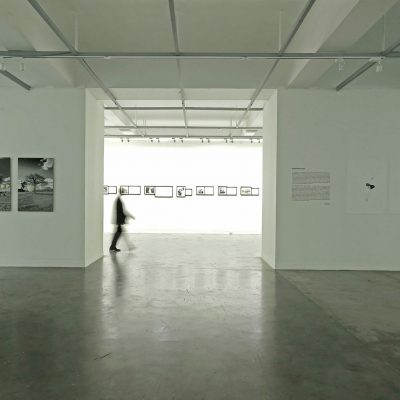
Lección de Cosas
If, in Peruvian contemporary art, memory tends to be thematized from documents as a faithfully respected reference, one can say that Brazilian contemporary art accepts that, in a narrative from memory, faithfulness to external references be betrayed whenever it feels the need to be carried to the present time as a vital force. This allows proposing the unification of daily experience with whatever irrationality fantasies and personal projections bring. And this definitely leads to emphasis not be put on the document as such, but in the sensorial response of the individual and, then, perception feeds itself directly from its contact with matter. This approach involves accepting the possibility that memory be radically reinterpreted with the consequent renouncement to faithfulness.
In the investigation of sensoriality, the value that Brazilian artists tend to cultivate the most is the haptic one, the one involving touch, the sense that registers experiences lived in what refers to the body, in the physical contact with other bodies, either inert or living, and experiences related to weight, pressure, position and texture. That does not imply that the visual sense is overlooked. Exactly to the opposite, one seeks to establish an experience to the person as a whole to create a combination between what the eyes can see and what the body can perceive, in order to awaken intensities that constantly defy reason with methods that are, at times, simple and complex, free, but linked to rigorous poetics and, certainly, very little orthodox, and nothing conventional.
This exhibition of selected works by Nydia Negromonte – a Brazilian artist born in Peru – is an example of the importance in evoking the real world as a root from the double experience of the visual and the tactile. In the works of Negromonte, the thought goes hand in hand with the processes of touching in order to penetrate the field of meanings that are hidden, but not esoteric at all, which memory confers things, but also to expand the personal sphere from the realization of the collaborative actual case of the work done during a workshop that took place at the Miró Quesada Room as part of a previous dynamics of the exhibition. What surprises in the works of Negromonte is that the fundaments are precise in their ability to communicate the basis experience that comes from the place we live in or, even, the one where we are temporarily. It is not simply a matter of domestic affection, but one of impetus and tensions that we do not know and never cease to know, and that forever links places and spaces to answers that are unforgettable and irrevocable to us in the emotional realm, as much as the activation of senses have happened to be ephemeral and passing.
Temporality is a crucial element in the works of Nydia Negromonte. The artist suggests that one should allow time to work on its own. In this sense, the growth and vigor of the life that breaks through the clay capsules involving the fruits and vegetables confront us with a dimension where processes occur from which we cannot carry recordings (or one we identify only with the purpose of discarding matter in transformation). As such, the process of remembering is a powerful – and fragile – one, if you pay attention and cultivate it.
This plasticity, as poetically carried by the artist, establishes a way of indirect referentiality that puts in evidence the experimental tissue that supports the integrity of the human being. Built upwards from a basic and precise material honesty, it awakens the conscience to the extraordinariness that is being and staying on a plane of what we usually consider ordinary and current